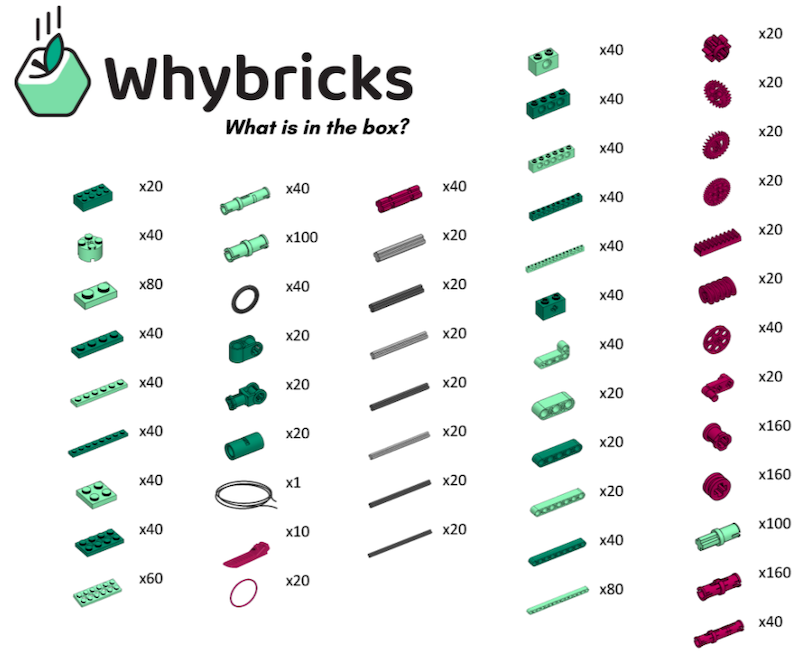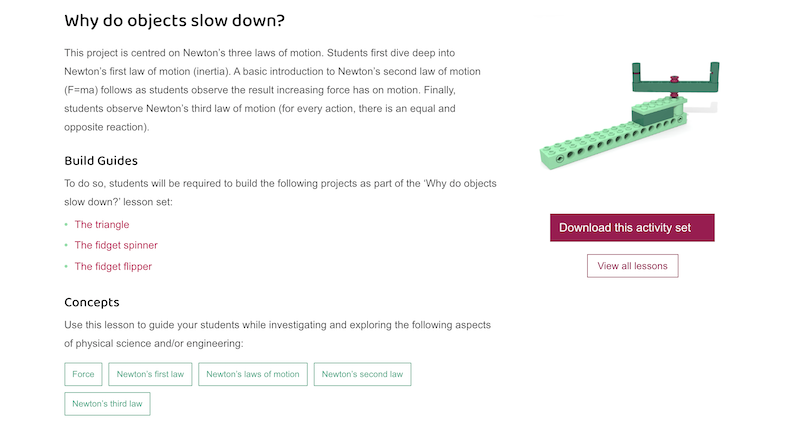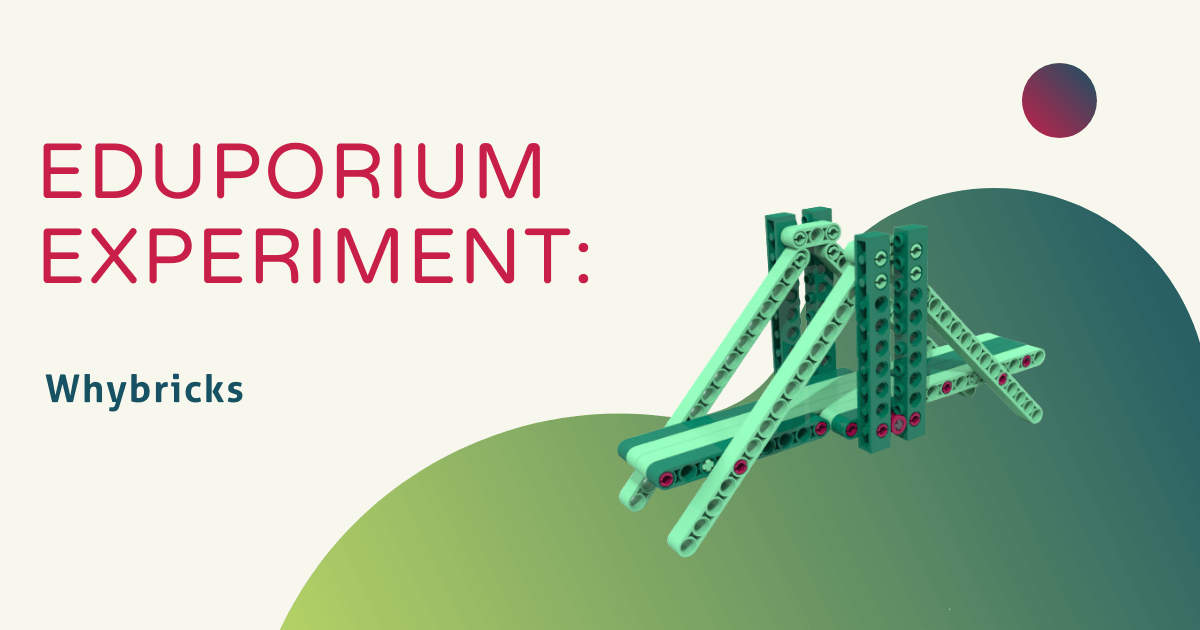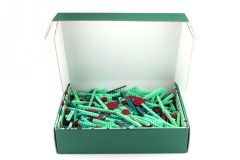Children benefit a lot from tangible, hands-on exploration and discovery-based learning. One of the easiest and most efficient ways for elementary educators to create those types of experiences is by utilizing simple engineering tools, which include building blocks and bricks. Design, engineering, and tinkering experiences each provide children with the chance to develop key engineering and problem-solving skills and try a truly unique way of exploring physical science. For this Eduporium Experiment post, we're trying a new STEM solution we offer—this entry-level engineering kit known as Whybricks. Students can use it for exploring many new and exciting areas of STEM education through inquiry, building, and more.
The Whybricks kit is quite affordable and designed for students as young as eight years old. It comes in an organized box with 2,100 pieces—enough for children to split up among as many as 20 of them. The whole system is focused on the premise of using hands-on building blocks to help students explore key elements of physical science in the classroom or makerspace. It also makes for low-pressure learning situations and high-quality opportunities for experimentation. Its sweet spot lands between third and fifth grade, allowing educators to take advantage of students' natural curiosity for exploration.
Building with Whybricks blocks.
Students can build all sorts of structures and inventions with the interlocking Whybricks blocks. Their kits include free lessons and a teacher's guide as well, making it easy to integrate in a classroom environment. Following along with the projects enables students to engage in relevant STEM learning and exploration. Plus, the more they use Whybricks blocks in their classroom, the more chances they have to build STEAM connections—particularly within engineering. The pieces and projects even help make it easy for teachers to facilitate multiple projects at once. Also, kids can use the components with LEGO-compatible systems.

The great thing about the Whybricks blocks is that students can easily attach, remove, and interlock them to each other. Among the 2,100 pieces in this kit, there are building blocks, beams, gears, pegs, and other parts for these projects. Most of the piece types in the Whybricks kit come with between 20 and 160 units. This makes it easy for educators to distribute them among children or for them to explore different options while building. Since there are so many pieces, however, teachers often enjoy having the students work in pairs while they're constructing in the classroom.
Once they get start building with the Whybricks blocks, their comprehensive guides and worksheets really help students develop their rhythm. They, of course, help ensure they're building things correctly and helps them better understand the value of following directions. Worksheets also include investigative prompts, so students can keep key concepts in mind while they work. They're also inclusive, helping educators create a student-centered community and student-driven learning experiences. On top of that, all pieces are simple for kids to handle and place in their projects. This helps them stick to their project guides or create custom designs once they get more confident.
The lesson guides and teacher tools.
Accessing all Whybricks lessons is completely free and a big part of teaching with the Whybricks system in any classroom. They help simplify physical science and enable all students to better understand commonly abstract concepts. As we've alluded to, the pieces and projects provide educators with greater flexibility as well. Each lesson is self-contained and designed to help students attain specific achievements, benefits, or educational outcomes. It doesn't matter where teachers begin when it comes to these lessons, either. They can go in any order they'd like and they'll still be able to cover all the key STEAM topics.
Many of the Whybricks lessons center on investigation-based learning. Kids work towards answering 'why' questions throughout the time they're designing and building the projects. The projects cover various areas of physical science and engineering and involve a number of important STEAM concepts. Children also get to learn about things like force, motion, engineering design, energy and more. Like you might have realized, these are all of the common topics they'd normally explore in a science class but, with Whybricks, they get to do so in a completely hands-on way.
The projects are also very structured and enable children to access and digest information effectively. They are given scientific facts relevant to each project that help them make real-world connections. It also allows them to employ that scientific mindset in the classroom and grants them autonomy to explore STEM in any ways that work best for them. Each lesson is built to help kids foster an inquiry-based mindset for problem solving as well. They help instructors transfer agency to their students and position students to embark on problem-solving journeys based on investigative questions.
Making connections to engineering.
And, engineering is definitely a big part of teaching and learning with the Whybricks kit as well. It's actually very closely related to this method of investigative or inquiry-based learning and it helps students focus on working through the engineering design process from start to finish. They start with defining a problem and designing an attainable solution. They will also learn about everything from setting goals to evaluating their results. Since the lessons are clearly illustrated, it often makes for an easy introduction to new engineering concepts and challenges.
As for the lessons themselves, they're easily accessible right on the Whybricks website with nine beginner STEM activities to help students get started. Kids can explore topics like 'Why do objects slow down?' and 'Why do some roads have truck escape ramps?' to learn about key science and engineering topics. They'll get to know some of the most widely utilized and important scientific concepts, like Newton's three laws of motion, understand how gravity works, recognize the functions of inclined planes, and more—all with these simple building blocks and guiding lessons. Since each activity includes the important 'why' question, kids should have no issue using these pieces to design objects that help them find solutions.

The Whybricks projects.
Clicking on any individual project provides students with the resources they need for building and learning. On the 'Why do objects slow down?' activity, for example, they'll see a very brief introduction, build guides, concepts covered, and a button to download the activity set. The build guides feature instructions for each of the components students would have to construct for any given project. For this particular project, there are three: the triangle, the fidget spinner, and the fidget flipper. Plus, some concepts covered include force, Newton's first law, Newton's second law, and Newton's third law. Students or teachers can download the activity set in a zip file that has everything from build and teaching guides to WOW sheets for students.
Overall, Whybricks is a really intuitive system and a great option for a simplistic introduction to engineering. The kit is available on our store (find it below) and makes a great addition to elementary STEAM learning or school makerspaces. If you have any questions about Whybricks, please feel free to contact us. Follow us on Twitter and Instagram or check out the rest of our blog for more!




